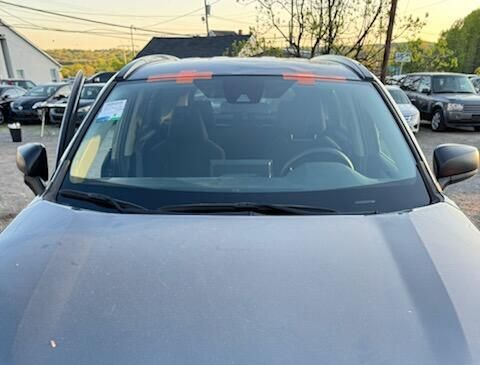What is ADAS (Advanced Driver Assistance Systems)?
ADAS: What You Need to Know
Today’s vehicles have advanced greatly, featuring new technology that makes your driving experience easier and safer. ADAS (Advanced Driver Assistance Systems) technology consists of several components that provide safety features like self-parking, lane departure warning, automatic emergency braking, and more. Some of this technology is mounted inside your windshield, which is why it needs to be calibrated after a windshield replacement. It is important that your ADAS features are accurate and functioning properly. Here’s everything you need to know about your vehicle’s ADAS technology.
Common ADAS Features
- Lane Departure Warning: Cameras and sensors detect road markings and issue a warning if your vehicle drifts outside its lane.
- Lane Keep Assist: Similar to lane departure warnings, this feature helps steer your vehicle back into the lane if it begins to drift.
- Adaptive Cruise Control: Cameras and sensors measure the distance between your vehicle and the one in front of you. If the vehicle ahead slows down, adaptive cruise control adjusts your speed accordingly.
- Forward Collision Warning: Similar to adaptive cruise control, this feature uses cameras and sensors to assess your speed and distance from obstacles, warning you of a potential collision.
- Automatic Emergency Braking: If a forward collision is imminent, your vehicle will apply the brakes automatically to prevent an accident.
- Blind Spot Monitoring: Cameras and sensors monitor your blind spots and alert you to the presence of other vehicles, helping you make safer lane changes.
- Parking Assistance/Rear Cross Traffic Alert: These systems use cameras and sensors to assist with parking and backing out of driveways. Rear cross traffic alert warns of approaching vehicles from the sides, while parking sensors and rearview cameras simplify maneuvering in tight spaces.
- Driver Attention Warning: ADAS technology tracks your driving behavior for signs of fatigue or distraction. If detected, a warning message may appear advising you to pull over and rest.
How Does ADAS Work?
ADAS technology primarily consists of cameras and sensors located throughout the vehicle. The key components include:
- Cameras: Mounted inside the windshield and other areas to detect road markings, signs, traffic lights, and surrounding objects.
- Radar: Sensors measure the distance and speed of nearby objects, especially useful in low-visibility conditions like fog or rain.
- Ultrasonic Sensors: Typically used for parking assistance, these sensors detect nearby objects using sound waves.
- Lidar: Found in some advanced systems, Lidar (Light Detection and Ranging) creates a 3D map of the surroundings for enhanced object detection.
ADAS is Advancing
Currently, ADAS systems are ranked from 0 (no automation) to 5 (fully autonomous vehicles). Most vehicles on the road today rank at level 2, meaning they can control steering and speed in certain conditions, but still require driver attention. As self-driving technology progresses, future autonomous vehicles will likely rely on more advanced versions of today’s ADAS technology.
ADAS Calibration
After a windshield replacement or an accident, ADAS cameras and sensors can become misaligned. Even a one-degree misalignment can result in an inaccuracy of about twenty feet on the road, which can have serious consequences when using features like lane keep assist or emergency braking.
There are two types of ADAS calibration:
- Static Calibration: The vehicle is positioned on level ground in front of specialized targets to align the sensors and cameras.
- Dynamic Calibration: A trained technician drives the vehicle to expose cameras and sensors to real-world road signs and markings, allowing the system to calibrate itself.
Some vehicles require one type of calibration, while others need both. ADAS calibration is crucial after a windshield replacement to ensure the system functions accurately and keeps you and your passengers safe. Some auto insurance providers even mandate ADAS calibration following a windshield replacement.
Need an ADAS Calibration in Baltimore, MD, or Harrisburg, PA?
If your vehicle needs ADAS calibration in the Baltimore, MD, or Harrisburg, PA, areas, Empire Auto Glass has you covered! We offer certified windshield calibration to ensure your ADAS technology functions accurately. If you need a windshield replacement, we also provide a wide selection of OEM or better-quality auto glass. Contact our team today for a free quote!
GET A FREE QUOTE NOW & RECEIVE $25 OFF YOUR AUTO GLASS SERVICE
Contact Us
We will get back to you as soon as possible.
Please try again later.

"My windshield broke and I had to travel the next day and I could not find my windshield anywhere but Empire not only found my windshield, they came the same day to replace it. They were truly professional and saved the day. Sticking with Empire auto Glass forever."
Adil Z.
See All Reviews
"Thank you for the excellent work on replacing my windshield for my Hyundai Elantra. Quick, easy, and best prices in the area. Definitely will be using this company again. Thanks!"
Edwin R.
Leave A Review
"My recent experience with Empire Auto Glass was amazing. Urgently Needing a windshield replacement, I reached out to them and received outstanding service from start to finish. Speaking with the boss, Sean, he was able to get me in for same day service, which was very helpful. Overall Great service, Affordable, and easy to work with! Thank You Empire 🙏🏻"
Sahil A.
See All Reviews
"This was hands down the easiest experience I’ve ever HAD. They only asked a couple of questions and got straight to work. Thank you guys so much for the awesome experience!"
Haidar S.
Leave A Review

FREE Disposal For Old Auto Glass!
Baltimore: 410-578-4444
5278 Reisterstown Road, MD 21215
Pennsylvania: 717-966-1555
110 State Highway, Enola, PA 17025
All Rights Reserved | Empire Auto Glass

